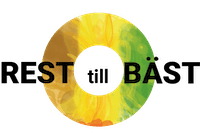Residues to Best Use
Biochar as a solution and a product in a sustainable and circular society
The Biochar Handbook - for usersOur vision
The aim of Residues to Best Use is to develop solutions for managing society’s organic residues (park and garden waste, agro-biopellets, sludge, algae and seaweed) and create a beneficial product (biochar), while at the same time minimising the environmental and climate impact of the residues and establishing a carbon sink. Our goal is to push towards a climate-smart, sustainable and circular society and a greener and healthier world.
About the project
The project has run since May 2017. The current focus is the optimisation and scaling-up of technologies previously developed within the project and the verification and dissemination of results. Residues to Best Use will proceed until the summer of 2023. It is partially financed by Sweden's innovation agency, Vinnova.
From cradle to grave…
Residues to Best Use is one of the first projects that has taken an overall approach of biochar - from the handling of organic residues and production of biochar through pyrolysis to the distribution and use of biochar, including life cycle analyses, certification and recommendations.
Read more
The Biochar Handbook - for usersProject organisation
Residues to Best Use consist of six work packages.
WP 6:
Biochar in society and management of results
Contact
Swedish University of Agricultural Sciences
“We've encountered many problems during the project, but we've found just as many solutions. Problem solving is a great source of knowledge, meaning that we've learnt a lot.”
Markus Paulsson, project leader for Residues to Best Use
Partners
The project has 27 partners - including universities, large companies, small enterprises and municipalities. Most are based in Sweden, but there are also a few international partners.
